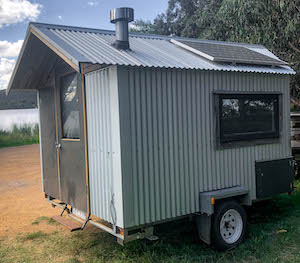Economics
Inflation (partly) explained
The ABC’s Gareth Hutchens has a neat piece explaining what is meant when policymakers speak of “inflation”. His piece is titled Why are soaring property prices left out of inflation figures? but he goes much further into the difficult territory of explaining what inflation is and how it is measured, with specific reference to the Consumer Price Index.
It’s a clear and straightforward explanation of what is included in, and excluded from, the CPI, with explanations and reasons. By definition the CPI is about stuff we consume, and we don’t consume the land on which houses sit.

Look, no land
That answer would get a “pass” in an Economics 1 exam, or would clear the first hurdle in the interview when one applies for a job in the public service. In a short piece a journalist can hardly go any further.
But the definition Hutchens describes is more about what has been adopted by convention rather than anything the economic founding fathers carved into stone tablets. The paper version of those tablets, Paul Samuelson’s basic economic textbook, defines inflation as “generally rising prices for goods and factors of production”, and apart from a few ancient Marxists who hold to a labour theory of value, land is one of the three basic factors of production (capital and labour being the others).
In fact the CPI is but one of many indicators of inflation. It is often called a cost-of-living index, and if the price of land were moving at about the same pace as the price of cars, eggs and movie tickets, it would probably serve reasonably well as a cost-of-living index. Also excluding the price of land wouldn’t matter if everyone bought a house in their twenties and held it or traded up until they died. But that’s not the world we now live in.
Interest rates partly explained
We should look forward to an increase in interest rates, because that will be a sign that the economy is getting back to something like “normal”. The Reserve Bank will no longer have to be stimulating the economy with absurdly low nominal rates (negative real rates once inflation is taken into account).
That’s the essence of an article by Ross Gittins: Interest rate rises will be a good thing – provided they’re not too soon. Good policy is about timing. Economic textbooks present a world where inflation occurs as soon as there are supply-demand imbalances, and interest rates rise quickly in response. But in the real world these movements are neither smooth or fast: timing counts.
Why there are labour shortages: Keynes had an explanation
The pandemic came, we closed our borders, immigrants didn’t come. As a result we Australians took up jobs and unemployment fell.
That’s a common perception, and the facts are right, but it’s a massive fallacy to attribute cause and effect, write Brendan Coates, Alex Ballantyne and Will Mackey of the Grattan Institute: The myth that won’t die: shutting down immigration did not kickstart the economy.
They demolish the age-old but often trotted out myth that immigrants take jobs from Australians.
More basically they turn to another basic economic explanation: the Commonwealth outlaid $300 billion in stimulus payments. That’s what has stimulated demand and therefore employment. A straight Keynesian fiscal stimulus.
They suggest that this demonstrates the success of the government’s economic policy. That’s questionable. No one would argue against the government giving the economy a Keynesian boost. But would any reasonable person call the way they went about it “good economic management”? All that money has been spent, public debt has been incurred, and we have nothing to show for it apart from a dangerously inflated housing bubble and bumper profits because of “jobkeeper” payments to already profitable firms.
Football, meat pies, kangaroos and Aussie cars
The Centre for Future Work suggests that Australia could once again have a significant motor vehicle manufacturing sector, this time in electric vehicles: Vehicle manufacturing in Australia: industrial opportunities in an electrified future. We have the raw materials required for batteries, we still have a workforce experienced in vehicle manufacturing, and there is still a supply chain of companies that have experience in making motor vehicle components.
The author, Mark Dean, calls for a modest level of subsidies, on both the demand and manufacturing side, to resurrect the vehicle industry. He addresses demand-side concerns including power (EVs have plenty of grunt) and range (improving). He envisages an industry with a high level of Australian value-added. He does not address the issue of scale economies, but because of their simpler mechanical design, without a complex IC engine, EV manufacture may be viable at lower volumes than traditional IC-powered vehicles.